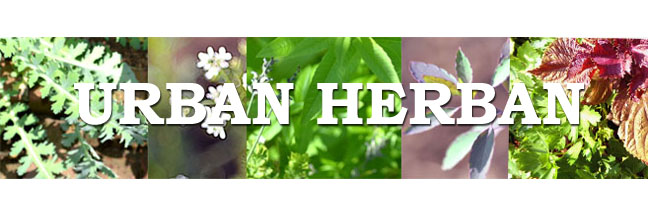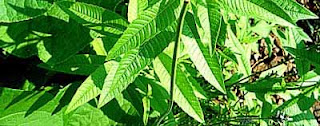Site News: Hackensack River Greenway
Come to the Hackensack River Greenway in Teaneck, see the
native plants--and let the Hackensack River go by. You will understand the enthusiasm of the Friends of the Hackensack Greenway, an organization which develops and maintains
walking trails here.
The Mary S. Topolsky Garden and Trail at 640 River Road is a new part of the Greenway. Mary was instrumental in Teaneck’s purchase of the land, and planned the trail with ADA-wheelchair accessibility in mind. The trail, now a reality, is paved with small stones, and winds around the incline, so those using wheelchairs can go to the river. Planting of the Garden and Trail in 2016-17 included fragrant native flowers and plants, such as Joe Pye
Weed and Bergamot, as well a butterfly garden.
Master Gardeners are needed to volunteer their expertise in invasive plant identification and control, water edge planting, native plant propagation and trail maintenance. If you would like volunteer experiences on this site, contact Richard Karp, rich1201@mac.com.
2010
An article about Mary's design of the Library Garden Space with the Garden Club of Teaneck
Come to the Hackensack River
Greenway in Teaneck, see the
native plants--and let the
Hackensack River go by. You will understand the enthusiasm of the Friends
of the Hackensack Greenway, an
organization which develops and maintains
walking trails here.
The Mary S. Topolsky Garden and
Trail at 640 River Road
is a new part of the Greenway. Mary
was instrumental in Teaneck’s purchase of the
land, and planned the trail with
ADA-wheelchair accessibility in mind. The
trail, now a reality, is paved with
small stones, and winds around the incline,
so those using wheelchairs can go
to the river. Planting of the Garden and
Trail in 2016-17 included fragrant
native flowers and plants, such as Joe Pye
Weed and Bergamot, as well a
butterfly garden.
Master
Gardeners are needed to volunteer their expertise in invasive
plant identification and control, water edge planting, native plant propagation
and trail maintenance. If you would like volunteer experiences on this site,
contact Richard Karp, rich1201@mac.com.
plant identification and control, water edge planting, native plant propagation
and trail maintenance. If you would like volunteer experiences on this site,
contact Richard Karp, rich1201@mac.com.
An article about Mary's design of
the Library Garden Space with the Garden Club of Teaneck Mary
Topolsky Talks about Her Pathway to Landscape Design
June 2010
The Garden Club of Teaneck is proud that Mary Topolsky is a member---and a very active one at that. She is a noted garden designer who has created gardens throughout the United States and Canada, as well as right here in Teaneck, NJ. Her interest in landscape horticulture did not spring full blown into action. Mary lived in Brooklyn, NY, where her back yard was Prospect Park, with the cherry trees, greenhouse and Japanese maples impressing her as a youngster. She was raised in public gardens where “you looked but
didn’t touch.”
didn’t touch.”
Mary moved to Teaneck “44
years ago this month” and
had her first summer with the garden left behind by the previous owners. “Everything was fine the first summer!”
had her first summer with the garden left behind by the previous owners. “Everything was fine the first summer!”
T
here was a fig tree in residence, as well as her young children. At that time,
Mary lived a whirlwind life working as a fundraiser and pursuing an advanced
degreein political science. Her garden would evolve into different landscapes over
the years as Mary’s curiosity and experience grew. Her joys of gardening include “solitude; solace.” She went to
retail nurseries where “retail therapy was so nice!” And so her garden grew into a perennial display, lined with pathways among seasonal blooms. Now, in early April, emerging Chinese peonies and daffodils competed for attention with the spectacular deep pink Hellebores.
Her move to the New York Botanical Garden was jump-started by attending an open house, where she showed a picture of her garden to Susan Cohen, head of the Landscape Design department. Susan said,” You don’t
need us!” Mary related that she did need the classes and enrolled in the
Landscape Design Program. After two years of study, Mary was awarded a
certificate in Landscape Design from the New York Botanical Garden, and is
trained to design Formal and English cottage styles, among others. She now
includes native flower gardens in her repertoire.
need us!” Mary related that she did need the classes and enrolled in the
Landscape Design Program. After two years of study, Mary was awarded a
certificate in Landscape Design from the New York Botanical Garden, and is
trained to design Formal and English cottage styles, among others. She now
includes native flower gardens in her repertoire.
Mary outlined for readers the kinds of classes a landscape designer takes. “There are technical classes---to
figure out what to
place where it would fit after it grew. A tree may grow 18 feet wide and you
need to think of that. You transfer a yard to a piece of paper---a plan, with
the plants drawn to scale.” How about the kinds of plants used in the
design? “For that, you do classes research.
One of the sources is Manual of Woody Landscape Plants by Michael A.
Dirr. You also learn to read a catalog to
select and buy plants.”
place where it would fit after it grew. A tree may grow 18 feet wide and you
need to think of that. You transfer a yard to a piece of paper---a plan, with
the plants drawn to scale.” How about the kinds of plants used in the
design? “For that, you do classes research.
One of the sources is Manual of Woody Landscape Plants by Michael A.
Dirr. You also learn to read a catalog to
select and buy plants.”
Her inspiration for garden design comes from “travel---seeing
gardens.” Among her favorites are the gardens of Kyoto, Japan, which display” asymmetry, restfulness, subtlety, symbolism---there
is no glaring color: they even trim azalea bushes so they will not bloom.” What
has been most challenging? “The groundhogs near the river” (where she designed a garden) have been a definite problem."
gardens.” Among her favorites are the gardens of Kyoto, Japan, which display” asymmetry, restfulness, subtlety, symbolism---there
is no glaring color: they even trim azalea bushes so they will not bloom.” What
has been most challenging? “The groundhogs near the river” (where she designed a garden) have been a definite problem."
A local garden that Mary designed that all readers can see is the Teaneck Municipal Library border, which circles the library. “The design for the
two beds is seasonal in theme. From the old Library entrance (facing Teaneck Road), you can see an autumn theme with three ilax verticillatas (winterberry), a Hamamelis ’Diane’ (witch hazel ), and a Cornus ‘Ivory halo’ (dogwood.) Grasses and sedum (‘Autumn Joy’) are
interspersed for a glorious display of red berries and twigs with golden grasses to set it off. The other bed facing the
Library parking lot is dedicated to spring and summer. It was built on a group
of existing azaleas dedicated to a library associate, Shirley Bloom. We added
five azaleas, three hydrangeas (‘Endless
Summer’,) a ‘Knockout’® rose, and a Viburnum ‘carlesii’. To create a vertical element, Cercis canadensis ‘Lavender Twist’ (redbud tree) was placed towards the rear. Transplanted daylilies were interspersed throughout.”
Library parking lot is dedicated to spring and summer. It was built on a group
of existing azaleas dedicated to a library associate, Shirley Bloom. We added
five azaleas, three hydrangeas (‘Endless
Summer’,) a ‘Knockout’® rose, and a Viburnum ‘carlesii’. To create a vertical element, Cercis canadensis ‘Lavender Twist’ (redbud tree) was placed towards the rear. Transplanted daylilies were interspersed throughout.”
This year
look for some peonies and
iris.
iris.
Mary is also active on community environmental boards, including the Hackensack River Greenway Advisory Board, Friends of the Hackensack River Greenway Through Teaneck nd the Garden Conservancy. Her class on gardening ” Zoomin’ Bloomins” will be taught at the Community School of Teaneck on April 25th and May 2nd. Call the Community School at (201) 833-5514 for more information about her classes.
June 2010
By Patricia O’Brien Libutti




















